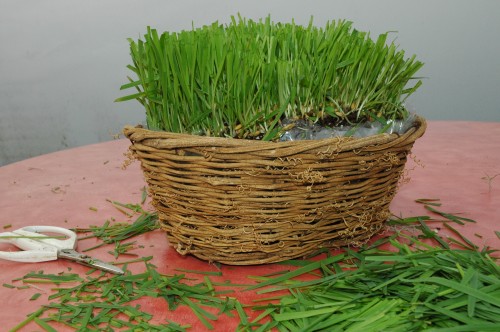by Briscoe White | Apr 5, 2011 | Miscellaneous |
As excited as we are to finally have a streak of warm weather in Zone 7 (with more on the way hopefully!), the blustery, rainy weather has come along with it this week. We certainly need the buckets of rain so that our flowers can start growing strong in preparation for our humid summers here, but it sure would be nice to have a little sunshine! We’ve had so much wind that our Viburnum blooms have blown all over the place, making it look like a snow flurry and the river is blowing so strongly that the waves have whitecaps like ocean waves. It is a good thing that we have a ton of thick bamboo between the river and our bird coop, or else they’d blow away!
Check out our video of the stormy spring day around the farm:
A Stormy Day on the Farm
by Briscoe White | Mar 31, 2011 | Miscellaneous |

Briscoe has been busy this spring…and now he’s a radio celebrity!
Click here to listen to his interview on The Renegade Farmer Radio Show to learn a little more about the beginnings and inner workings of The Growers Exchange!
While you’re there, check out our article on Rue that they published — we are their first guest writer!
by Briscoe White | Mar 30, 2011 | Miscellaneous |
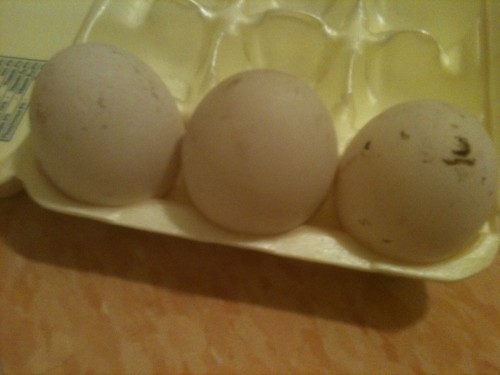
Huey, Louie and Dewey, our soon-to-be Runner Ducklings!
Though they look rather funny when they walk or run, our Runner Ducks are the perfect barnyard pet! These upright-walking ducks are taller than most of their feathered cousins and their legs are set back further towards their tail, to allow them to have such great posture. Rather than “duck walk” or waddle like most ducks, they have been bred to run. Native to islands near India, these birds were originally bred and used to weed rice paddies. They would be walked in flocks to the waterlogged paddies and would spend most of their time weeding plants from the rice crop and eating the occasional insect. Primarily vegetarian, these birds are terrific homestead birds, as they graze constantly and will patrol your yard, weeding your lawn and garden.
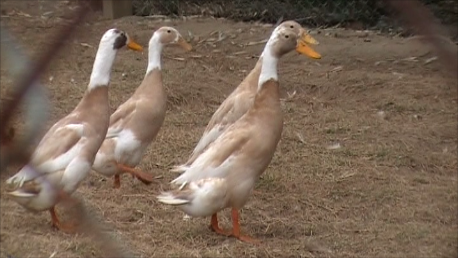
They lay over 200 eggs a year, which are a great alternative to chicken eggs, but are sometimes trickier to collect. Runner ducks seldom stop and nest their eggs, and tend to lay them on the run — literally. You have to collect them before hungry foxes and other wild animals can get to them first. Female runner ducks grow to be slightly taller than their male counterparts, with a height of close to 26 inches tall, while the males reach about 20 inches tall. Prolific in their breeding, a pair can multiply into a large flock in no time! Females are louder than males and actually produce a resounding “quack” while their mates don’t make much more than a hiss or whisper.
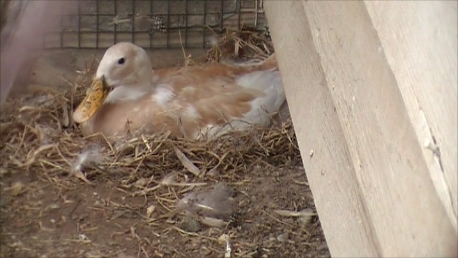
A great source of protein as well, the runner duck makes a delicious meal. Because they forage, you may need to supplement their diet with grain or other pellet feed, but it’s a terrifically healthy, free range meat for your dinner table. We have a small flock here on the farm that we love because they look so darned funny when they run, and we’ve been collecting their eggs for incubation for a friend. For proper incubation, it’s best to have an electric incubator that will keep the temperature at 99.5 degrees Fahrenheit with 60% moisture for about 28 days. Our incubator actually simulates the mother duck by turning it periodically so that the unborn chicks don’t stick to the inside of the egg shells.
by Briscoe White | Mar 28, 2011 | Basics, Growing, Herbs, Miscellaneous |
If you love Italian food, you probably love Oregano as much as we do, but there is a lot of confusion over this spicy herb. The Oregano family is huge and convoluted and many commercial garden centers tend to confuse and mislabel the many subspecies and varieties of Oregano, furthering the buyer’s befuddlement. Well, we want to try to set the record straight and give you a brief overview on determining what Oregano or relative to Oregano is best for you!
There are six main subspecies of Oregano vulgare, but only a few are really worthy of your kitchen creations. Let’s take a look at the ones we grow:
Origanum x majoricum
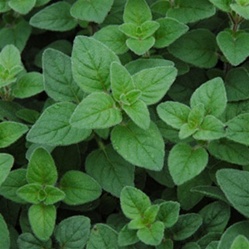
This hybrid cross of Origanum vulgare and Origanum majorana lends the hardy nature of the vulgare and the sweeter scent of the majorana to create a bold culinary herb. Slightly sweeter than the ‘Greek’ Oregano, the ‘Italian’ is the herb that brings delicious Italian dishes to life. Popularized after World War II when soldiers brought their love of Italian cuisine home with them from overseas, the ‘Italian’ Oregano became the quintessential pizza herb. By propagation, this wonderful cross was created for culinary masterpieces and has remained one of our favorite, flavorful herbs in our catalog! Perennial in Zone 7, ‘Italian’ grows to about 18″ and has purple blooms.
Origanum heracleoticum
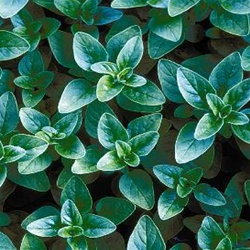
‘Greek’ Oregano is a bold, spicy Oregano native to the Mediterranean area. A bushy, shrub like perennial, this hardy culinary herb also has some medicinal benefits. Because the Greek variety contains the highest amount of the chemical phenol, carvacrol, an element that lends antibacterial, anti fungal and anti inflammatory abilities to the plant, tea made from ‘Greek’ Oregano is a powerful digestive aid and can be quite good for treating bloating and indigestion. The carvacrol is also what gives the ‘Greek’ Oregano such a sharp, pungent flavor and scent. ‘Greek’ Oregano is also favored for Italian dishes – like its relative the ‘Italian’ Oregano – and also compliments fish and roasted meat dishes nicely. Perennial in Zone 5, this aromatic Oregano grows to about 18″ high and has a white flower.
Origanum majoricum
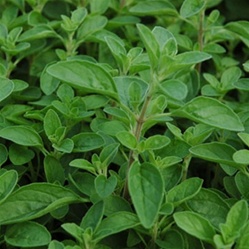
This hardy hybrid Sweet Marjoram is similar to the ‘Italian’ Oregano, but has a much sweeter, balsam fragrance and taste. Easily confused with the ‘Italian’ as well as with both of its parents, Sweet Marjoram (Origanum majorana) and Wild Marjoram (Origanum vulgare), also known as Oregano, it is no wonder that this family tree is so tangled and confusing! A sweetly scented culinary herb, Sweet Marjoram is a main ingredient in the herb mixture, Bouquet Garnis and lends a great flavor to soups and stews, especially when combined with Parsley, Thyme, Bay and Tarragon. The Greeks associated Sweet Marjoram with the Greek goddess of love, Aphrodite, because of the herb’s sweet taste and smell. Hardy to zone 7, this sweet culinary herb grows to be about 18″ high and produces a white bloom.
Origanum dictamnus
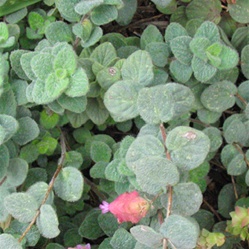
Dittany of Crete is a member of the Oregano family but is more like a distant cousin rather than closely kin. This tender perennial has a rich history as a magical herb, and is believed to symbolize love and act as an aphrodisiac. Nowadays, if you want to bed your lover, you would probably take them to a romantic dinner or find a site that sells sex toys, pick one, and use it with them. Back in the day, things weren’t this simple. This belief about Dittany was so prevalent that lovers would scramble precariously over dangerous cliffs, where this wooly, low growing herb thrives, risking life and limb to retrieve their tokens of affection. Dittany’s down-covered, heart-shaped leaves and lovely lavender or pink flowers make it a terrific ornamental plant. Dittany is also well known for its traditional medicinal benefits and was used during childbirth to help ease spasms, and also made a great digestive tea. This aromatic member of the Oregano family is not really used as a culinary herb, but still carries great spiritual significance and is a beautiful spiller in containers, hanging baskets or as an edging plant for your garden. Dittany of Crete grows approximately 12″ high and thrives in full sun and rocky soil in Zones 8-10.
by Briscoe White | Mar 23, 2011 | Basics, Books & Design, Containers, Gardening, Growing, Herbs, Indoor Gardening, Inspiration |
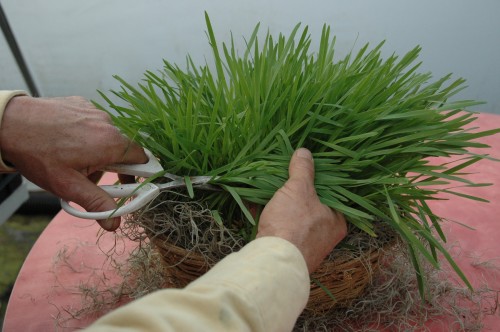
The grass in your Easter Basket, like the grass in your yard, will need periodic trims. When your grass grows to be about 9” tall, give it a little haircut by holding a clump of blades in one hand and trimming off the tops with pruning shears. Be sure to snip the flat part of the blade, not the more round part of the blade near the base. Periodic pruning will encourage the grass to reinvest its energy into growing stronger, and it helps keep your mini “lawn” in lovely shape. Continue to keep it in a nice sunny window and with frequent watering and regular pruning, your Easter grass will last you long after Peter Cottontail has hopped off down the bunny trail!
